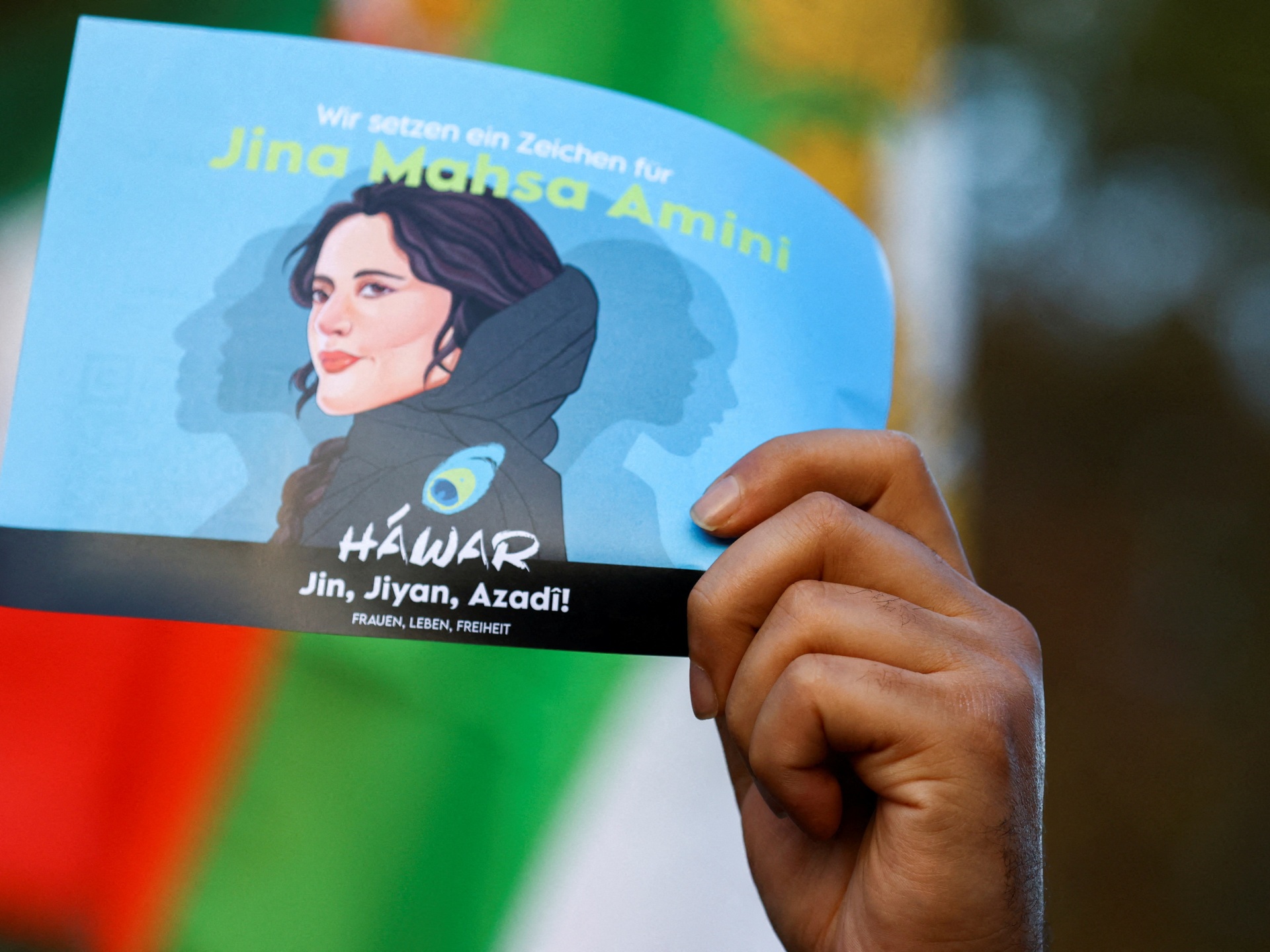Tehran, Iran – Tehran and Washington are clashing again over weeks-long protests in Iran as the United States is organising a meeting of the United Nations Security Council over the unrest that erupted after 22-year-old Kurdish woman Mahsa Amini died in the custody of morality police last month.
The US and Albania – another major critic of the Iranian government – will hold an informal UNSC gathering on Wednesday, as first reported by Reuters and also confirmed by Iranian state media.
Iranian Nobel Peace Prize laureate Shirin Ebadi and Iranian-born actress and activist Nazanin Boniadi – whom the Iranian state considers to be anti-establishment – will speak at the meeting, along with UN investigator on human rights in Iran, Javaid Rehman, according to Reuters. Other UN member states and rights groups can reportedly attend the meeting as well.
But while the outlet cited a note outlining the event as saying the meeting will “highlight the ongoing repression of women and girls and members of religious and ethnic groups in Iran”, Tehran has offered a different account.
The Iranian government’s website, IRNA, on Saturday cited unnamed “diplomatic sources” as saying Washington is organising the meeting in response to a rare joint report by the Iranian intelligence ministry and the intelligence division of the Islamic Revolutionary Guard Corps (IRGC) late on Friday that blamed the US as the main culprit behind the protests.
“Instead of responding to the points raised in the Iranian intelligence community, the US is fleeing forward and exhibiting selective support for human rights with specific political goals,” the source was quoted as saying.
Iran’s mission to the UN made the same point, in a statement referring to the US as the “prime suspect of the riots” in Iran.
“The US and its allies have consistently taken advantage of such a platform (the UN) to advance their political agendas, even at the expense of violating international rules and the UN Charter,” it said, accusing Washington of double standards in supporting Iranians.
Women and ethnic Kurd and Baluch populations have featured prominently in the protests.
The commander of the elite IRGC warned protesters on Saturday against taking to the streets. “Do not come to the streets! Today is the last day of the riots,” Hossein Salami said.
Iran’s top authorities, including Supreme Leader Ali Hosseini Khamenei, have publicly blamed the US, Israel and others as being the orchestrators of unrest across the country, during which many dozens are thought to have been killed, with more injured or arrested.
UN spokesman Stephane Dujarric on Friday voiced concern and urged the Iranian authorities to address the “legitimate grievances of the population” while condemning “all incidents that have resulted in death or serious injury to protesters”.
What’s in the Iranian intelligence report?
The lengthy joint intelligence report that Tehran claims has motivated the upcoming UNSC meeting paints a picture of accounts that inform Iranian authorities’ stance on the protests.
According to the report, the US and some of its allies had planned – and delayed – unrest similar to what is happening across Iran right now for a long time, and had designs for different stages prior to, during and following such unrest.
The Central Intelligence Agency (CIA) has been at the forefront of the US efforts, and has been aided by the intelligence services of the United Kingdom, Israel, Saudi Arabia and other countries, it asserted, based on “completely credible” information.
The Iranian intelligence community claimed the US has spent billions of dollars over the years to create a network of sympathetic organisations and individuals, holding many gatherings and also courses to teach “hybrid wars and soft overthrow” of the Iranian establishment.
These all-paid courses, it said, have been held in Turkey, the United Arab Emirates, Italy and South Africa among others, with or without knowledge of those countries’ governments.
The report uses the initials of two female Iranian journalists, whom it says were “trained by the courses of the US mafia regime in foreign countries” and “played the role of being the first sources to manufacture news for foreign media” on developments concerning Amini that led to the protests.
The reporters accused by Iranian intelligence are Niloofar Hamedi and Elaheh Mohammadi, who were arrested shortly after protests broke out last month and remain imprisoned in Evin prison in Tehran. Hamedi was among the first to report on Amini’s death at the hospital, while Mohammadi travelled to Amini’s hometown of Saqqez to report on her funeral.
The intelligence report also alleges that CIA officials met with Kurdish separatist groups in neighbouring Iraq’s northern Erbil region in late September to ask them to amplify their role in Iran’s unrest. The IRGC in late September and early October repeatedly pounded positions in Iraq’s semi-autonomous Kurdish region to punish the “terrorist groups” that it said were based there.
Foreign-based Persian-language television channels, which Tehran blacklisted this week, and social media platforms like Twitter and Instagram which have been banned, were also featured in the intelligence report as being influenced and manipulated by Washington in its efforts to counter the Iranian state.
